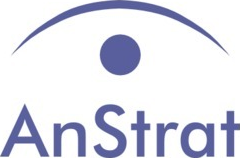last updated: Dec. 23, 2021

- Local Name: N/a
- Transliteration: N/a
- Alternatives: N/a
- Status: 2010s – Active
- Conflicts: European Islamist Militancy, Syrian Civil War
The GICM Maaseik Remnant Network [GMRN] is a jihadi entity that has grown out of the infamous cell of the Moroccan Islamic Combatant Group [GICM; Groupe Islamique Combatant Marocain] from the Belgian town of Maaseik. The module played a key logistical role in the GICM’s European operations in the early-to-mid 2000s.1 It regularly hosted the organization’s leaders and sheltered some of the terrorists responsible for the May 2003 Casablanca suicide attacks and the March 2004 Madrid train bombings.2 Belgian authorities started dismantling the GICM cell in early 2004 after Dutch police arrested alleged cell leader Khalid Bouloudo in the Netherlands.3 Over the next months, more than a dozen members were captured by Belgian security forces during raids in Maaseik and elsewhere in the country.4 Most of the operatives were apprehended in early June when intelligence services feared GICM members were might have been planning suicide attacks in Belgium. Key members of the cell in Maaseik were sentenced to prison by a Belgian court in 2006.5
In the early 2010s, the imprisoned GICM members were freed after having served their time in prison. At least some of these men regrouped in Maaseik to give rise to the GMRN. They started preaching at local mosques and developed ties to members of the Antwerp-based Shari’a for Belgium Movement [Sh4B].6 Bouloudo and his brother-in-law Lahoussine el-Haski attracted a following among radical Muslims in and around Maaseik and branched out into other parts of the Limburg province.
GMRN leaders maintained their devotion to jihad and encouraged followers to go fight in Syria. More than a dozen GMRN associates ended up joining Islamist militant groups in the country.7 The network furthermore provided logistical assistance to militants traveling to Syria.8 Some senior GMRN members went to the country themselves. In 2013, Rachid Iba joined his Sh4B acquaintances in the Syria and became a member of the Holy Warriors’ Consultative Council [MSM; Majlis Shura al-Mujahideen].9 Abdelkadir Hakimi traveled to Syria the following year.10 The network’s associates in the Levant eventually joined the Islamic State in Iraq and the Levant [DaIISh; Dawlat al-Islamiya fi-Iraq wal ash-Sham].11 In Syria, cadres of the GMRN established contacts with members of the Khalid Zerkani Network [KZN].12
In the summer of 2014, GMRN leaders set up their own mosque in the village of Neeroeteren. They used the facility to worship, mentor young radicals, commemorate fallen jihadis and recruit new fighters.13 The network’s increasingly bold posture and accumulating reports of members joining militant organizations in Syria attracted the attention of the Belgian authorities. In January 2015, security services cracked down on the GMRN and apprehended Bouloudo and three associates in a series of more than twenty raids in Limburg, Antwerp and Brussels.14 The network’s mosque was closed.15 Those arrested were released in the runup to their trial.16 Court proceedings were marred by postponements and procedural difficulties. Eventually, nine elements of the GMRN were sentenced to prison in April 2018.17 All were free by early 2020.
Although key members of the GMRN were supposedly under active monitoring by security services, they were able to acquire weapons and develop ties to Antwerp-based criminals.18 In April 2020, Bouloudo and his companions abducted the teenage son of a Kurdish drug trafficker from his home.19 The boy was released 42 days later after a ransom had been paid by his family.20 Police arrested Bouloudo and his associates shortly afterwards. By mid-July 2020, fourteen people involved in the kidnapping had been apprehended. Bouloudo and Haski were among those arrested.21 Most of them were released over the following months.22
References
